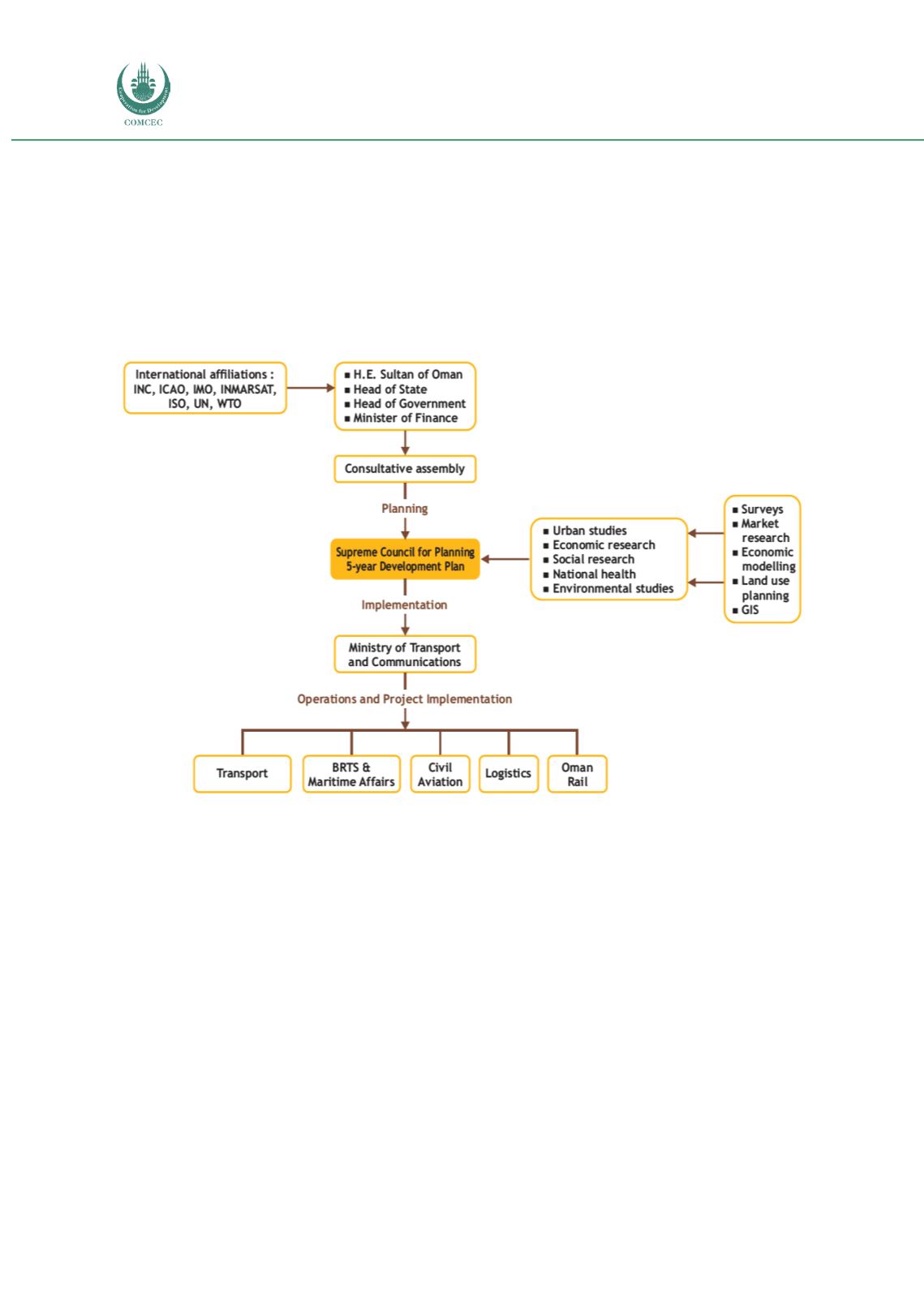

Planning of National Transport Infrastructure
In the Islamic Countries
134
the data collected. Because all services are owned by the state the extent of private funding of
transport services and infrastructure is minimal. Possibly because of the way the state
machinery works there is little attempt to evaluate alternative solutions included in planning
procedure to come up with optimized investments. Similarly, the extent to which the financial
investment plan considers the adequate funding of maintenance and operation expenses along
the lifetime of the project is minimal.
The NTI planning process of Oman is shown in the following figure.
Figure 40: NTI Planning process of Oman
In Oman NTI plans do not appear to cover measures/projections on the pricing of transport
infrastructure but environmental impacts of transport infrastructure are an important part of
the assessment of the planning processes. Naturally the financial planning of projects is a very
important perspective although feasibility appears not always a priority as all funding is from
the state budget. There is no utilization of private finance. PPP is not used at the present time.
3.6.5. Content of NTI Plan
The purpose of Oman National Spatial Strategy (ONSS) is to provide a comprehensive spatial
framework for directing, organizing and implementing sustainable high quality urban and rural
development in the Oman. It is intended to provide incentives for enhancing socio-economic
prosperity in combination with improving the environment for the future. The ONSS provides
framework for development in the Sultanate for 2040. The main drivers for the ONSS is as
follows:
Population growth in size and typology
Economic growth and diversification
















